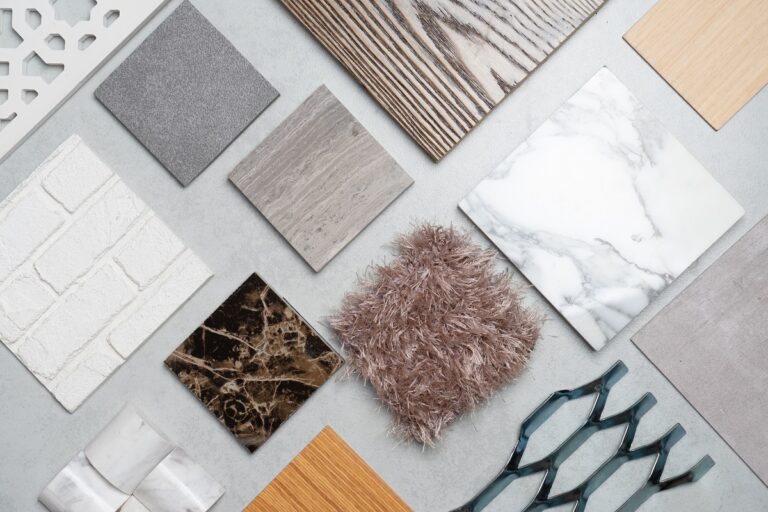If you’ve ever wondered, “how should I markup products?” as an interior designer, you’re not alone. You might even question, “should I be marking up products at all?”
The short answer: YES, you absolutely should. Marking up trade discounts that you’ve secured through your valuable supplier relationships is a well-earned way to boost your revenue. And while explaining markups to clients might seem tricky, being transparent from the start builds trust and prevents misunderstandings down the line.
Below, we’ll discuss the how’s and why’s behind interior design product markups. We’ll explore how exactly to explain markups to clients, and what to do if a client questions the charge. We’ll also share guidance on increasing your profit from product markups while keeping prices fair for your clients.
While we’re specifically focusing on how to integrate product markups into your revenue stream, if you need help with other areas of interior design project pricing, check out our complete pricing strategies guide.
Table of Contents
Why interior designers should markup products
Charging for markups is just like charging for any other piece of the design process. You wouldn’t create floor plans for free, so why would you find, purchase, and manage product orders without being paid for your efforts?
In fact, marking up products is often a better deal for clients, who might have paid a higher price (even with the markup) if they found and purchased the piece on their own. If you purchase pieces for lower prices than your clients can get on their own, even with the markup factored in, their costs stay at or below market rate. Also, remember: the markup price includes the effort you’ve put into developing and nurturing a great relationship with the vendor.
If you’re still debating whether or not you should charge for product markups, remember:
- Better Deals for Clients: Often, your clients might pay a higher price on their own. Thanks to your trade discounts, even with a markup, they may end up paying less or around the market rate.
- Valuing Your Efforts: The markup reflects the time and effort you’ve invested in building those supplier relationships, ensuring your clients get the best products.
- Industry Standard: Markups are standard across industries—from grocery stores to auto mechanics. Your work is no different.
The average markup in the interior design industry
The industry average product markup for interior designers is 35%, but the rate each designer applies varies greatly. This variation depends on several factors, such as the type of product being sold. High-end or custom furniture and decor items might have a higher markup compared to more common, readily available pieces. Additionally, the demographic and economic status of the target market can influence markup rates, with luxury clients often expecting higher markups for exclusivity and quality.
Established designers with a strong reputation may charge higher markups due to their expertise and unique design perspectives. Markup percentages can also vary by region, with metropolitan areas often seeing higher rates due to increased operating costs.
How to markup products as an interior designer
Follow these steps to ensure your pricing is fair while also securing your well-deserved compensation:
Step 1: Track your tasks, time, and related costs for sourcing and procurement
As mentioned above, you deserve to be paid for each task you complete, including:
- Staying on top of the latest industry standards and design trends
- Finding and assessing quality vendors and suppliers for client products
- Establishing relationships with potential suppliers
- Discussing rates with suppliers to secure the lowest possible prices
- Reviewing and signing supplier contracts
- Purchasing products and tracking orders and deliveries
- Storing and managing items until the official install date
Costs to consider:
- Shipping and handling
- Storage fees
- Taxes
Don’t forget the “Worst Case Scenarios” that may arise…
- Resourcing backordered or out of stock product
- Handling claims, damages, returns, exchanges
- Restocking fees
- Negotiating with a vendor and/or receiving warehouse about repairing/replacing items
- Increased shipping costs
Check out our sourcing and procurement guide for more detailed information on all that goes into acquiring materials and products.
Also remember that your clients are unlikely to be considering the sheer amount of work that went into bringing that stunning sofa or coffee table into their home. It’s your job to keep track so you can chat through it if a client ever questions your markup rates.
Step 2: Decide how you’ll present markup fees to clients
You can either:
- Include markups in the product price: This approach is straightforward and transparent.
- List the markup as a separate fee: Label it as a “design fee” or part of a full-room price.
Choose the method that feels most comfortable for you.
The way you list these fees is personal preference, as both methods offer transparency for clients and fair compensation for you. Choose the method you feel the most comfortable with and don’t second guess it. Bottom line: you deserve to be paid for your time.
Step 3 (optional): Consider wholesaling to increase profit percentages
Wholesaling can increase your profit margins while offering clients lower prices. If you’re new to this, start small and gradually incorporate it into your business.
For more detailed advice on getting into wholesaling and mastering the process (both for your clients and your own profit growth), check out our ultimate guide to wholesaling for interior designers.
How to explain trade markups to clients
If clients ask about your furniture markup fees, walk them through the work you perform to source, order, and manage products.
Explain you’re getting these products at the lowest possible wholesale price, so they’re paying you for your efforts instead of giving that same profit amount to a big-box retailer. Compare a few past prices that you have charged to their MSRP (if lower) to show that they may even get items more affordably than if they were to order them on their own. Share examples of other markup costs they pay in their everyday life (at retail stores, pharmacies, restaurants, etc.).
If clients are still concerned about your markup costs, don’t be afraid to walk away. You’re worth being paid for all of your efforts, and you’re worth working with clients who respect that fact.
Alternatives to markups
Markups are common in the interior design industry. They’re often the number one strategy for designers who want to maximize their profits from projects.
But if you still aren’t comfortable with product markups, that’s okay. There are a few other ways to ensure your clients are satisfied with your pricing while still giving you a fair profit.
Design fees
You could charge a flat rate on your quotes, proposals, and invoices to cover the work you do while finding and purchasing products. Label it as “design fee” or “designer’s fee” and share some details of your sourcing and procuring tasks with clients if they ask for more information. These fees do not raise the cost that clients pay for products, but they do pay you for the time you spend managing them.
Monthly management fees
Charge a monthly management fee from project start to the estimated product delivery date. Include details like product sourcing, ordering, tracking, and delivery if needed.
Flat fees
Instead of breaking down product costs, design fees, etc., you can price your project with a flat fee. Make sure you give yourself some margin over the product costs so you’re being paid for your sourcing and procurement efforts.
MSRP comparisons
You could also consider placing the average sales price next to your marked up price to show the client that they are still saving money, even though the cost they pay is higher than wholesale.
Wholesale sites
Use sites like Side Door or Daniel’s House Club to make affiliate profits on your design products. These platforms let you curate product selections and earn commissions when clients purchase through your links. You can build custom storefronts or design boards that align with your aesthetic, blending profitability with a personalized client experience. This approach not only supports your revenue goals but also provides a seamless and professional shopping experience for your clients.
With all of this said, remember that markups are a part of your interior design business. There’s nothing wrong with getting paid for sourcing and procurement. As we’ve mentioned throughout this post, you deserve to be compensated for every task you complete. The above suggestions are simply alternative formats in case you don’t feel ready to implement product markups on your own.
Frequently asked questions about marking up products
25% is a lower-than-average markup rate. While calculating markups, remember you will still be paying taxes and incurring business expenses such as shipping and storage costs, so your take-home pay will reflect a smaller percentage. Most designers charge at least 30-35%, while some charge as much as 50-60%.
In most cases, yes. Many states have laws around disclosing markups and commissions in the interior design industry. It’s better to err on the side of caution with legal issues and disclose all markups and commissions. Where you share these is up to you, with disclosure of potential markups in your contract, fees listed as their own line item in your invoice, etc.
This is a common scenario, and it doesn’t mean you did anything wrong. If a client raises this concern, explain that your pricing includes more than just the cost of the product—it covers your time spent sourcing, ordering, tracking, and resolving any issues with that product. You can also reference your trade relationships and how often, even with a markup, your price still comes in below retail or at market value. If price comparison becomes a recurring issue, consider sharing MSRP data upfront or adjusting your approach with more detailed pricing breakdowns.
Platforms like DesignFiles allow you to source and save products efficiently, automatically generate branded tear sheets and invoices, and clearly present marked-up prices in a professional way. With features like real-time notifications, integrated questionnaires, and client portals, it’s easier to stay transparent and organized. DesignFiles also syncs with QuickBooks and lets clients approve or decline products directly, making your markup process more streamlined and client-friendly.
Ready to grow your interior design business? Learn more about DesignFiles, the top-rated software for interior designers.


